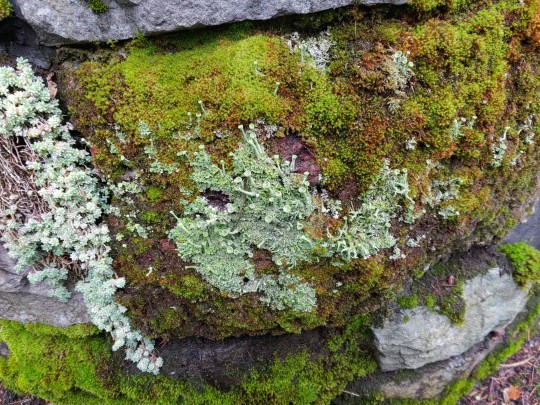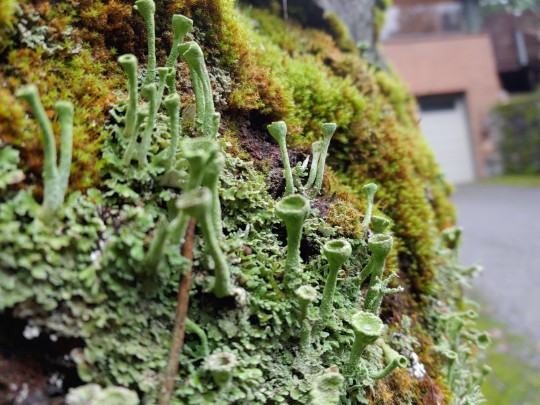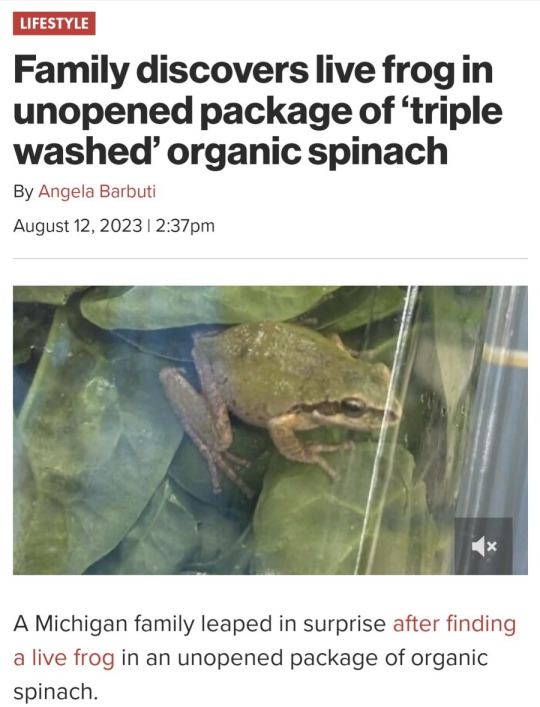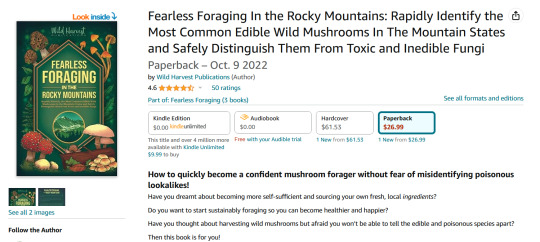there’s a lot of free snacks in the woods
Last active 2 hours ago
Don't wanna be here? Send us removal request.
Text
id stop dead in my tracks and start smiling like an idiot while taking a million pictures
when I'm just walking around and something makes me screech to a halt and my eyeballs shoot out like binoculars and I gotta drop everything to take photos




49K notes
·
View notes
Text
i love the choice of words with “leaped in surprise” i hope they did that on purpose

he took a bath 3 times
69K notes
·
View notes
Text
and yes we WILL be covering the DIABOLICAL NIGHTJAR and the RED-RUMPED BUSH-TYRANT. No we WILL NOT forget the SAD FLYCATCHER or the TINY TYRANT-MANAKIN!





"We're gonna be talking about the BOOBY! We'll be talking about the WOODCOCK! Do you think that's FUNNY, Butthead? Do you find it AMUSING that we'll be talking about the SWALLOW? Yes, we're also gonna be talking about the DICKCISSEL, the BUSHTIT, the COCK-OF-THE-ROCK, the SHAG... and we will DEFINITELY be spending a LOT of time talking about...GREAT TITS!!"
48K notes
·
View notes
Text
Quiz Time! What type of bug is this?

if you said roly-poly or pillbug, you’re close but not quite right. This is a roly-poly:

What’s the difference? There are two common terrestrial isopods: the Sow Bug or Woodlouse, like in the first picture, and the Pill Bug, or Roly-Poly. They are the only two crustaceans that live their entire lives on land and look similar, so if you got them mixed up don’t worry about it, it’s an easy mistake.
The Roly Poly got its nickname for its ability to curl up in a little ball when it gets spooked, but Sow Bugs can’t do that. A Roly Poly will have more of a rounded shape, and his little legs will usually be tucked nice and neat under him. A Sow Bug is a little flatter, and often his legs will stick out a little further from his body. Sow Bugs also have two little appendages that stick out by it’s butt, and Roly Polys don’t have that.
These little dudes like to live in moist hidden areas like under logs and rocks, and munch on decaying matter. Neither one is any harm to people, they can’t bite or sting, they don’t infest pantries or food, and they won’t harm wood. There is no harm in them, so if you see these little guys in your house don’t hurt them, they probably just like your cool dark basement. You can take him outside and set him under some damp leaves.
source
#pill bug#roly poly#woodlouse#sow bug#bug identification#bugs#isopods#they’re just silly little guys#i love isopods so much
1 note
·
View note
Text
if ANY mushroom guide, wether it be a book or an article or a video, says that “mushroom hunting isn’t as dangerous as everyone assumes” then PLEASE find another source. foraging is a great activity, but especially when it comes to mushrooms don’t take safety lightly. ALWAYS cross reference and use more than one form of ID, and ALWAYS make sure that the source or reference book you’re using is reliable, especially now with things like this. there’s no such thing as being too careful.
ai generated mushroom guides could get people killed

'i'm not going to link any of them here, for a variety of reasons, but please be aware of what is probably the deadliest AI scam i've ever heard of: plant and fungi foraging guide books. the authors are invented, their credentials are invented, and their species IDs will kill you"

"update: i keep getting annoyed that the QTs are like "if this is true, it's horrifying" ..but you're right, you don't know me from a hole in the ground and you SHOULD worry about the veracity of anything you find online."
thread source
so i went looking

the full description:
How to quickly become a confident mushroom forager without fear of misidentifying poisonous lookalikes!
Have you dreamt about becoming more self-sufficient and sourcing your own fresh, local ingredients?
Do you want to start sustainably foraging so you can become healthier and happier?
Have you thought about harvesting wild mushrooms but afraid you won’t be able to tell the edible and poisonous species apart?
Then this book is for you!
Save money and enjoy the delicacies that nature has to offer. Mushroom hunting is easier than you think, and less dangerous than everyone assumes.
Wild plant foraging is increasing in popularity with celebrity chefs and small cafes jumping on the bandwagon and using locally foraged produce in their food.
There are so many benefits of foraging to your health (physical and mental) and even the environment!
In Fearless Foraging in the Rocky Mountains, you’ll discover:
Over 40 species of mushroom you can harvest all year round
Complimentary access to the mobile-friendly Digital Field Guide that includes high-resolution photos and descriptions of all edible mushrooms and any toxic lookalikes so you don’t have to worry about misidentifying species
How to correctly create (and use) spore prints to help you figure out what’s what
An annual mushroom calendar so you can keep track of the mushrooms by season and make the most of each foraging season
Detailed descriptions of the anatomical properties of fungi - gain the essential knowledge you need to correctly identify species
Tips on sustainable foraging - and ways to increase the natural mushroom count for next time you visit!
And much more!
Foraging is a tradition upheld for centuries by indigenous people who used ancient, respectful principles to live off the land. Connect with that history by embracing the artful skills and knowledge to confidently collect food for your meals.
Even if you're still worried about toxic mushrooms, let this guide reassure you. Included are incredibly high-level descriptions and details to use so you don’t get it wrong. NOTE: To keep it economically prices, our paperback version is printed in black and white. Premium color is available in our hardcover version. Both will provide the quality necessary to identify wild mushrooms and plants and both come with access to the full color, high-resolution Digital Field Guide.
If you want to learn the skillful art of foraging mushrooms and enjoy nature's nutritious bounties then scroll up and click the “Add to Cart” button now.
end description
wild harvest publications... no named author? i n t e r e s t i n g
"To keep it economically prices" hmm *the design is very human meme*
this book that promises highly detailed descriptions doesn't even have color images unless you pay a premium
"Mushroom hunting is easier than you think, and less dangerous than everyone assumes." hmm. hmmmmm. yeah the government definitely put out those 'if you don't know what it is don't put it in your mouth' PSAs for no reason
tldr don't buy foraging guides off amazon if you can't locate a human author and verify their credentials yourself
826 notes
·
View notes
Text
i’d also like to add that everyone has a different sensitivity to mushrooms. if you’re out foraging, and you find a big patch of mushrooms you’ve never tried before, don’t get overexcited and pick and eat them all that day. take a small amount, cook them, and eat them, then see how you feel the next day. some people get stomach issues from eating large amounts of certain types of mushrooms, so even though it’s exciting to find edible mushrooms, you need to understand what you can handle. even popular ones like chanterelles can upset your stomach. and when it comes to eating them raw, even if it’s technically safe to do so in some folks it can still cause stomach upset, so if you aren’t totally 100% sure that your mushroom is safe to eat raw, cook it, and if you tend to be sensitive to mushrooms, cook it.
I am all for creative sushi, but not when the creator doesn't fully understand the ingredients. A sushi restaurant in Montana served people sushi with raw and very undercooked morel (Morchella spp.) mushrooms on it. Over fifty people ended up sick with gastrointestinal upset, and two people actually died. Other restaurants that served the same batch of morels, fully cooked, had no such issues, and there was no evidence that there was any mishandling of the morels that could have caused a bacterial or other contamination. So it's pretty clear that the raw morels themselves were to blame.
Yes, there are a few wild mushroom species you can eat raw, and only in small amounts). No, Morchella are not among them. Morels have a toxin in them that's neutralized by cooking; Paul Stamets theorized that it's hydrazine, but no one has been able to isolate hydrazine in a morel yet so that's not a done deal. Whatever it is, there's enough of it that it tends to give people nasty gastrointestinal upset when they eat raw morels, even in small quantities. This is the first I've heard of people dying from it.
It's not the only time I've heard of people dying from consuming a commonly-considered-edible mushroom, though. There were two separate incidents--2004 and 2009--in which several people who ate angel wing mushrooms (Pleurocybella porrigens) died of encephalopathy. Now, it did turn out that most of the people sickened had pre-existing liver and/or kidney issues. And a 2011 study identified an unstable amino acid, now named Pleurocybellaziridine, as the possible fatal factor that was found in large quantities in angel wings. It could be that the culprits were flushes of these mushrooms with abnormally high amounts of Pleurocybellaziridine. But you can't tell how much of a given metabolite a given mushroom has just by looking at it, and so that raises enough of an alarm for me personally that as a forager I just put angel wings on the "do not eat" list.
Will I continue to eat morels? Yes. The toxicity associated with raw morels has been known for a long time, and there have been no recorded issues with thoroughly cooked morels (the angel wings were also cooked, meaning the toxin is not thermolabile.) And as mentioned before, almost any edible wild mushroom is going to give you gastrointestinal issues if you eat it raw. The mushrooms you get at the store are a weird outlier that can be safely eaten raw. And by the way, button mushrooms, criminis, and portobellos are all the same species--Agaricus bisporus--at different stages of development.
This is why I emphasize in my foraging classes that you should always cook your wild mushrooms thoroughly, and if you're trying a new species for the first time only eat a small amount and then wait a few days to make sure you don't have any reactions. As the saying goes, there are old mushroom hunters and there are bold mushroom hunters, but there are no old, bold mushroom hunters.
1K notes
·
View notes
